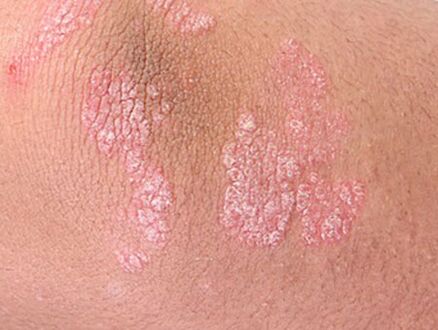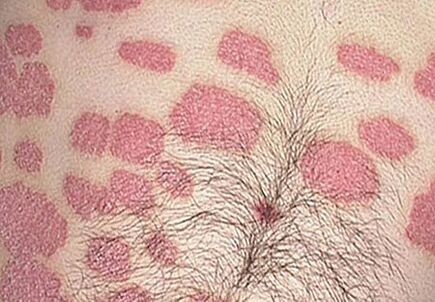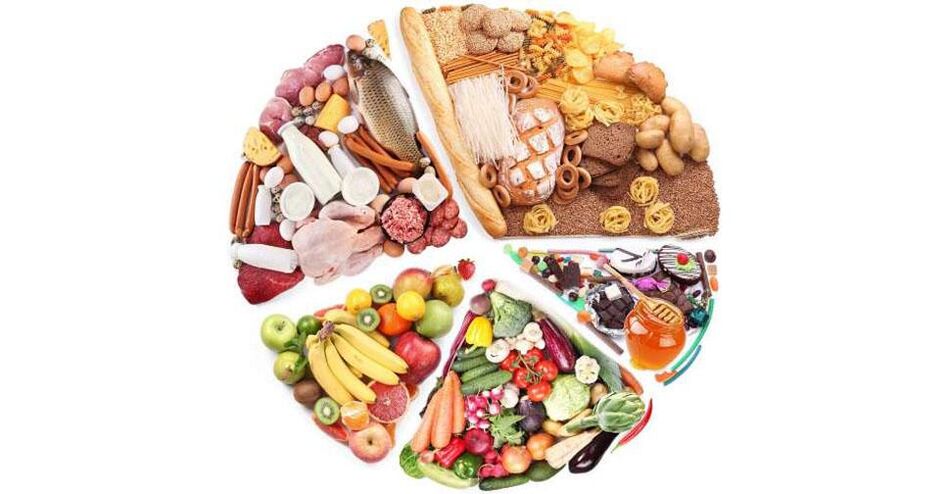What is it? Psoriasis is an endless skin disease, so it is impossible to be infected. It not only affects the skin, but also has a negative effect on the entire organism. It is characterized by a chronic course with a period of expansion and remission.
The disease is caused by their own immune cells, that is, it is an autoimmune disease. Increases from the depth of the skin to the upper layer, these cells cause inflammation, the division of excess epidermis cells, leading to excessive growth, the appearance of new small capillaries.
Outside, it looks like the formation of red or red spots - psoriatic plaques.
The first signs and symptoms of psoriasis

Since psoriasis - a systemic disease that affects all body systems - patients experience general weakness, rapid fatigue.
The main symptoms of the early stages of psoriasis are psoriatic rash and plaque, however, it accompanies a person with further disease progression.
They arise due to uncontrolled cell division located in the upper layer of the skin. The cells involved are formed, and the skin in the area thickens, gaining red due to enhanced new capillary formation. This leads to small drops of bleeding for any, even if it is mild, injury to the plaque.
The surface of the plaque is often covered with gray raids, similar to paraffin. Even the term "paraffin lake" is formed. The plaque is made up of dead epithelial cells accumulated on the surface of the plaque due to the affected rejection process.
Places can reach a relatively large size, joining each other. They are hot to the touch, often accompanied by severe itching. Combs can cause infection.
Over time, the nails began to change. Their surface is cut, hole -hole appears, spots -pink spots appear under the nail plate -fluid accumulation, nails turn yellow, thick, take the shape of chicken paws. All of this is due to a violation of nail nutrition and blood circulation.
Nail beds are subject to excessive deterioration, leading to rejection of nails and losses. There is usually a red border around the nails.
Small joints are affected by disease and small joints - this is accompanied by pain and inflammation.
In addition to plaque, with psoriasis, papules form on the skin - small (about 1 mm) that highlight the formation of rash. It is often localized on elbows and knees, preserved even during the remission.
During improvement, the plaque begins to light from the middle, obtaining the shape of the ring and can be completely lost. The pigment area remains in their place.
Psoriasis on the scalp have the same symptoms as on the body. In this case, the hair structure has not changed. The rash also covers the area next to the skin - behind the ear, around the neck.
Type of psoriasis
According to real symptoms, the disease is divided into two types: pustular and non -pustular. There are several types of diseases in this group.
Form of pustular psoriasis:
- General;
- Interesting especially limbs;
- Ladomary;
- Impetigo.
Not Psoriasis Pustule:
- common (chronic psoriasis);
- Erytro-dermo.
In addition, the following types of diseases are distinguished:
- psoriasis of skin folds and flexible surfaces;
- drugs.
Form with severity:
- light (affected by less than 3 % of the body surface);
- average (affected up to 10 % of the body surface);
- Weight (more than 10 % of the affected surface).
Depending on the shape of the rash, this type of psoriasis is distinguished:
- point;
- Haggard;
- monetary.
Stage of development of psoriasis, symptoms

The first plaque appears in areas with dry skin and never occurs where the skin is too wet, for example, armpits. First, the appearance of the spots can be seen on the inside of the elbow, below the knee, along the border of the hair on the head, as well as places subject to any injury or friction. Location is usually symmetrical.
Take such stages during illness:
- Progressive (new spots formation, existing growth, itching, significant peeling);
- stationary (moisture or suspension of plaque growth, absence of new spots);
- Regression (decrease or lack of peeling, loss of spots and plaques with the appearance of pigmented skin areas in their place, the signs of psoriasis are almost absent).
There is no special test to establish a diagnosis. Diagnosis is made based on external features. One of these signs will be a bleeding event when the plaque comes in contact, a bloody dew that is filled.
Another specific sign of psoriasis will be the presence of pale boundaries around the young papule, not yet covered on a scale. This is a visible vascular reaction of the skin, which means the development of the disease.
In the form of severe illness, blood images may change. Signs of flowing inflammation process appear. In some cases, you need to do biopsy to exclude other skin diseases and confirm the presence of psoriasis.
Effective psoriasis treatment
In the treatment of psoriasis, both local medicines and physiotherapy treatment, and spa are used.
In the early early journey of the disease, medicines in the form of ointment are used. First, ointment and composition creams are easy to use, then go to hormone -containing ointments. Cream from psoriasis should be used only for plaques and spots.
Ointment from psoriasis: an overview of hormone agents and not hormones
With average and severe disease, internal products that affect the whole body, but give the best results, are used. This group includes vitamin A, immunosuppressants, cytostatics.
Physiotherapists bring significant relief to patients with psoriasis, can prevent the development of the disease and sometimes replace the use of several drugs.
UV irradiation (phototherapy), laser, ultrasound and magnetotherapy, hyperthermia, electrons, electrophoresis, electrophoresis are used.
Psoriasis is able to obtain resistance to treatment used over time, so it is recommended to change the method (rotation of treatment) over time.
Diet with psoriasis

Nutrition should help adjust metabolism and prevent the appearance or suppression of skin symptoms. Since almost all patients have lipid metabolism violations, priority should be given to low products.
Special Fire Diets and others -Obtain extensive fame.
When organizing a diet, you should try to comply with some simple rules:
- Refusal of alcoholic beverages;
- Food up to 6 times a day, little by little;
- Excluding fried foods, smoking from diet;
- Reduce salt content in foods;
- If possible, do not use products with dye content, stabilizers and other nutritional supplements;
- Excludes citrus fruits;
- Increase the vegetable parts and cereals in the diet;
- Mandatory use of vegetable oil.
Compliance with these simple rules will help prevent psoriasis problems and freely compile a therapeutic diet.























